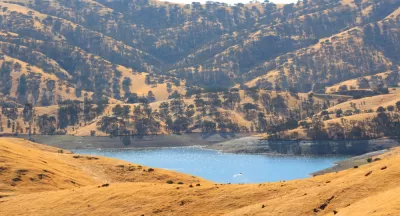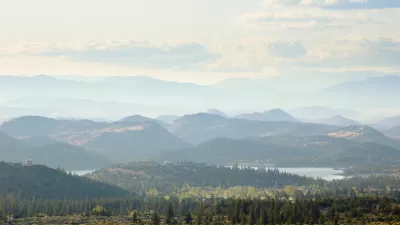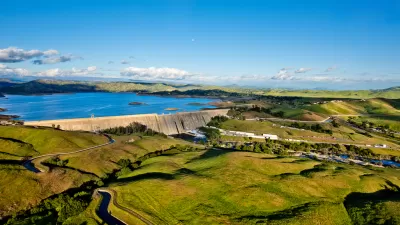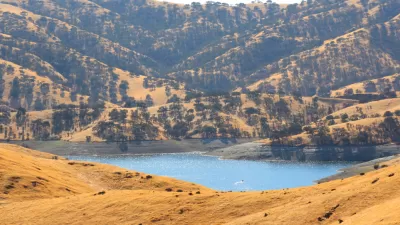California has used all its good dam sites, according to this column. And dams are unaffordable.

Columnist George Skelton has a message about California's water storage capacity: California shouldn't build any more dams.
California is building more dams, however, after state officials awarded $2.6 billion in funding for two dams, Sites and Temperance Flat, in 2018.
According to experts cited by Skelton, Sites is the only sensible dam location left in the state. "Sites would be an off-stream reservoir, so it wouldn’t block salmon from their spawning beds," explains Skelton. "A pipe would funnel Sacramento River water 14 miles west to the reservoir, which could hold 1.8 million acre-feet. It would be California’s seventh-largest reservoir."
Most dam sites in California face two major flaws: costs and silt. As for the price tag: "The way it works is this: Beneficiaries pay. Water used by farmers, manufacturers or homeowners is paid for by those people. Water that benefits the public — for recreation and flood control, for fish and the environment — is paid for by taxpayers." More dams mean higher water bills for the public.
Skelton describes silt as the "dirty secret about dams" and a "very major flaw." Reservoirs tend to fill up with silt, gradually reducing a reservoir's capacity as the dam cuts off the flow of water downstream. "A 2009 UC Berkeley report estimated that about 1.8 million acre-feet of storage space had been lost to silt. It found that nearly 190 reservoirs had lost more than 50 percent of their original capacity," according to Skelton.
Skelton made very similar points in a 2017 article, before the funding for Sites and Temperance Flats was approved. Today, Skelton argues that the future of water storage in California is underground. In 2017, he wrote this:
Operate the dams more efficiently. Recharge the aquifers. Expedite groundwater regulation. Capture storm runoff. Recycle. Desalinate.
Build Sites. Compromise and fix the delta.
One thing is not the answer: continuing to plant thirsty nut orchards in the arid San Joaquin Valley.
FULL STORY: Dirty little secret about dams and why state shouldn’t build more

Alabama: Trump Terminates Settlements for Black Communities Harmed By Raw Sewage
Trump deemed the landmark civil rights agreement “illegal DEI and environmental justice policy.”

Study: Maui’s Plan to Convert Vacation Rentals to Long-Term Housing Could Cause Nearly $1 Billion Economic Loss
The plan would reduce visitor accommodation by 25% resulting in 1,900 jobs lost.

Why Should We Subsidize Public Transportation?
Many public transit agencies face financial stress due to rising costs, declining fare revenue, and declining subsidies. Transit advocates must provide a strong business case for increasing public transit funding.

Wind Energy on the Rise Despite Federal Policy Reversal
The Trump administration is revoking federal support for renewable energy, but demand for new projects continues unabated.

Passengers Flock to Caltrain After Electrification
The new electric trains are running faster and more reliably, leading to strong ridership growth on the Bay Area rail system.

Texas Churches Rally Behind ‘Yes in God’s Back Yard’ Legislation
Religious leaders want the state to reduce zoning regulations to streamline leasing church-owned land to housing developers.
Urban Design for Planners 1: Software Tools
This six-course series explores essential urban design concepts using open source software and equips planners with the tools they need to participate fully in the urban design process.
Planning for Universal Design
Learn the tools for implementing Universal Design in planning regulations.
Caltrans
Smith Gee Studio
Institute for Housing and Urban Development Studies (IHS)
City of Grandview
Harvard GSD Executive Education
Toledo-Lucas County Plan Commissions
Salt Lake City
NYU Wagner Graduate School of Public Service





























